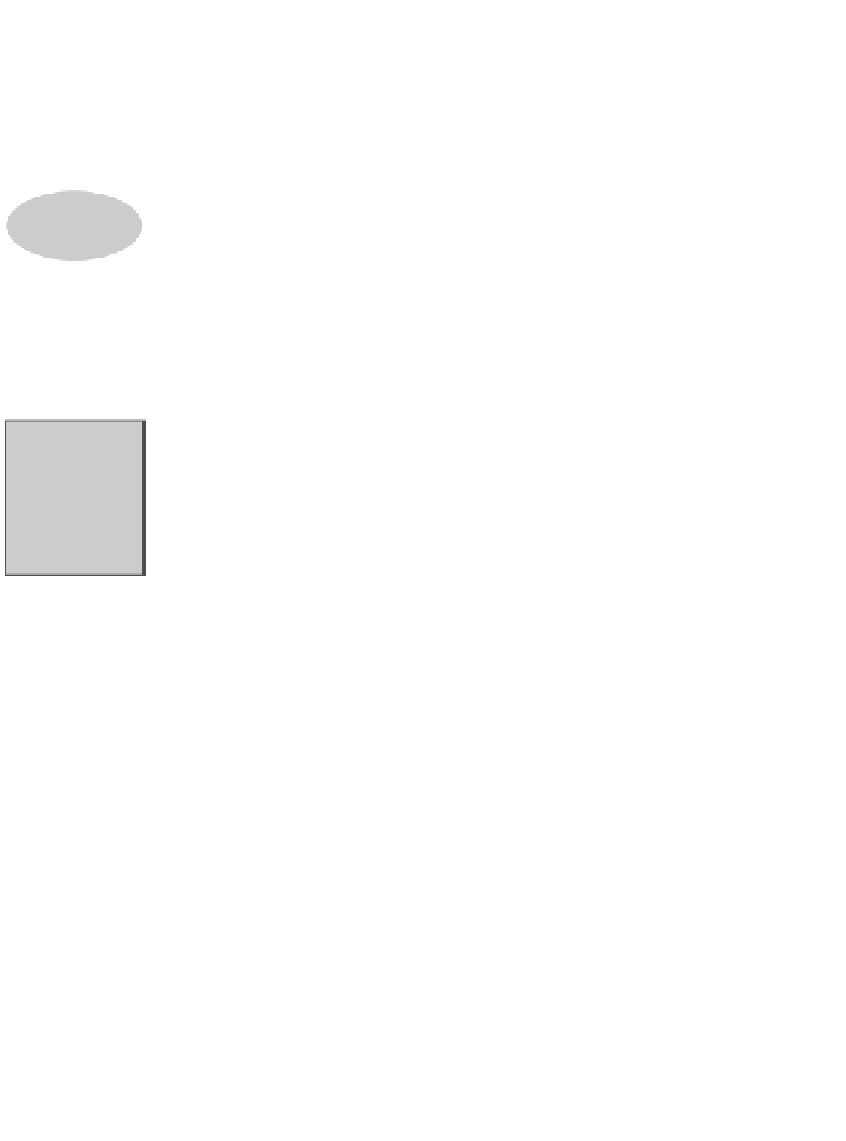Java Reference
In-Depth Information
Thus, we see that sorting an array of size
2
n
requires at most
n
frames at any
one time. As an example, to sort an array of size
2
15
= 32768
, at most
15
frames
are needed. We have indeed achieved a significant reduction in space require-
ments —if tail-recursive calls are implemented efficiently.
15.4.6
Removing quicksort's tail recursion
In Sec. 15.3.3, we showed how to remove tail-recursive procedure calls. We use
this technique to remove the tail-recursive calls of procedure
quicksort
in Fig.
15.10, showing the result in Fig. 15.11. Figure 15.11, then, is our final version of
quicksort
. For an array segment of size
n
, it takes space proportional to
log n
.
Its worst case time is proportional to
n
2
, but its expected time is proportional to
n log n
.
Activity
15-4.5
15.5
Object recursion
In a class
C
, we may create and store another instance of
C
, and, in that instance
we may create and store another instance of
C
, and so on. This is a form of recur-
sion, called
object recursion
. Of course, this process must stop at some point, or
else an unending number of instances of
C
will be created. A folder of class
C
that
contains a non-
null
field of class
C
is a recursive case of object recursion; a fold-
er of class
C
that does not contain a non-
null
field of class
C
is a
base case
.
We illustrate object recursion using a class that enumerates the permutations
of a
String
. The permutations of a
String
like "xyz" is the set of all its arrange-
ments, e.g.:
See lesson page
15.1 to get the
class for gener-
ating permuta-
tions from the
CD.
"xyz"
,
"xzy"
,
"yxz"
,
"yzx"
,
"zxy"
,
"zyx"
The only permutation of the empty
String ""
is itself,
""
, and the only permu-
tation of a
String
of one element, like
"x"
, is itself.
We write a class
PermutationGenerator
with the following methods:
1. A constructor with a
String
parameter
w
.
2. A function
nextElement
; which returns the “next” permutation of
w
.
3. A function
hasMoreElements
, which indicates whether
nextElement
has been called enough times to produce all the permutations of
w
.
Suppose we execute:
PermutationGenerator e =
new
PermutationGenerator("xyz");
Then, six calls of the form
e.nextElement()
will produce the six permuta-
tions of
"xyz"
. Since we may not know how many permutations there are, we
should always call function
e.hasMoreElements()
before calling
e.nextElem-
ent()
, to make sure another permutation exists.
Class
PermutationGenerator
implements interface
Enumeration
(see
Sec. 12.3), but you do not have to understand interfaces to understand class


Search WWH ::

Custom Search